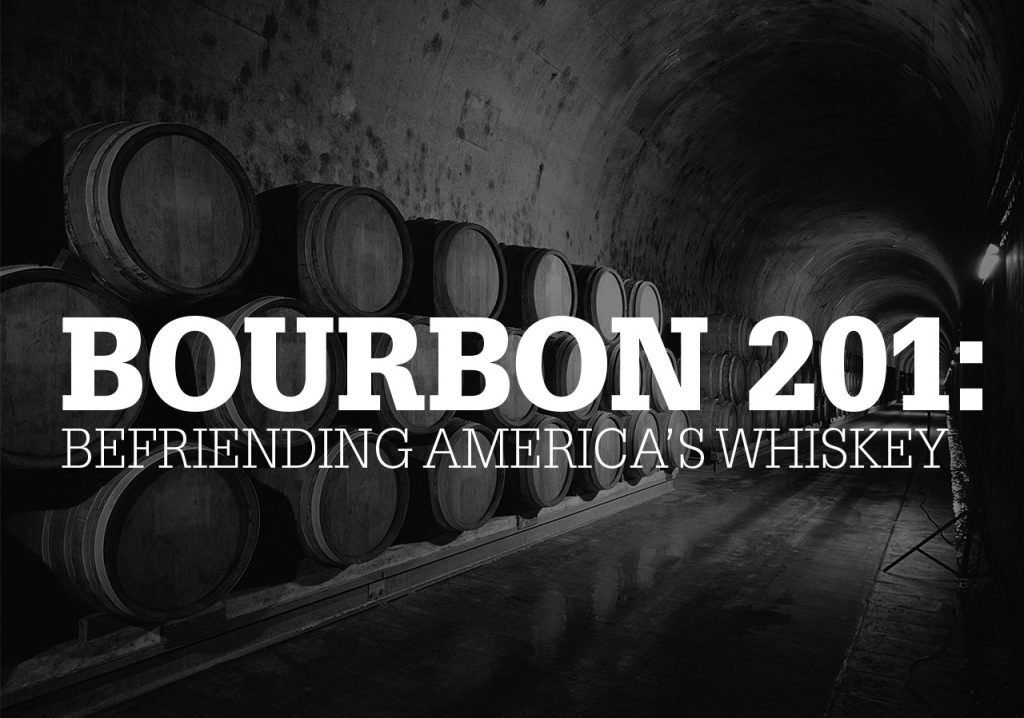September is National Bourbon Heritage Month, so it’s the perfect time to get better acquainted with “America’s whiskey.” Pull up your favorite cozy chair, top off that rocks glass, and cue the Coltrane—we’re diving into a modestly expanded guide that’ll have you speaking (and sipping) like a total bourbon-ite.
What IS bourbon?
Beginners’ Sip
Bourbon is an American whiskey that can be made anywhere in the U.S., not just Kentucky—though a large majority of it hails from the Bluegrass State. It’s golden-amber in color, always aged in oak barrels, and corn must make up at least a little more than half of the recipe.
Advanced Pour
The mash bill for bourbon must comprise at least 51% corn. But often, distillers will opt to use more than that—the average is between 60-80%. Corn, after all, is one of the reasons we even have “America’s Native Spirit.” Fed up with the expense of importing barley, rye, and other grains from their homelands, early Scottish and Irish settlers turned to America’s plentiful corn as their whiskey-making grain of choice. It was, obviously, a successful gamble.
To be classified as bourbon, the liquid must also be distilled to no more than 80% alcohol by volume (ABV) or 160 proof; it must be aged in charred, new oak barrels when it is at no more than 62.5% ABV or 125 proof; and it must be bottled at a minimum of 40% ABV or 80 proof.
How do they make it?
Beginners’ Sip
The grains are crushed, added to water, and allowed to ferment in large vats for a few days. The liquid is then distilled, which increases the alcohol content. Water is added prior to aging in oak barrels and (often) once again before the bourbon is bottled to achieve the desired proof.
Advanced Pour
Here in New Hampshire, we’re blessed with granite for days. But it’s Kentucky’s limestone-rich springs that really set the state apart in terms of flavor. Limestone filters out unpleasant-tasting compounds in water (like iron) and leaves behind trace amounts of calcium and magnesium—which are perceived by our palates as slightly sweet.
Once the mash bill is established and the yeast strains are selected (every distiller has their own recipe to follow to help maintain their house style), the water’s added and fermentation begins. The “distiller’s beer” that results from this fermentation is added to a still—typically a copper column still—and boiled. Alcohol vapor rises, then descends through a cooling chamber where it condenses back to an alcoholic liquid. Water is added, and the baby bourbon is stored in charred, new oak barrels. Once it’s been aged to the distiller’s specifications, it’s drained from the barrels and more of that glorious limestone spring water is usually introduced before bottling.
The “char” on the inside of the barrels brings out the wood’s natural sugars—this mingles with the bourbon to impart its trademark color, along with most of its aroma and flavor characters.
Now to the good stuff—what’s it taste like?
Do you need a special glass to enjoy bourbon?
Experts favor the glencairn, as its tulip shape exposes the whiskey to the perfect amount of air and efficiently funnels volatile aromatic/flavor compounds straight to your nose (where a majority of real “tasting” actually occurs) and your palate. But you needn’t be fancy to really enjoy—whatever glass you like, the key to tasting well is to go slow and sip thoughtfully. Do you smell or taste things like vanilla bean, burnt sugar, ripe banana, caramel, maple syrup, and cinnamon? These are just the beginning of the characters you may encounter in a good glass of bourbon. (No wonder it’s so popular.)
Lucky for you, your local New Hampshire Liquor & Wine Outlet has a fantastic selection to explore…cheers!
